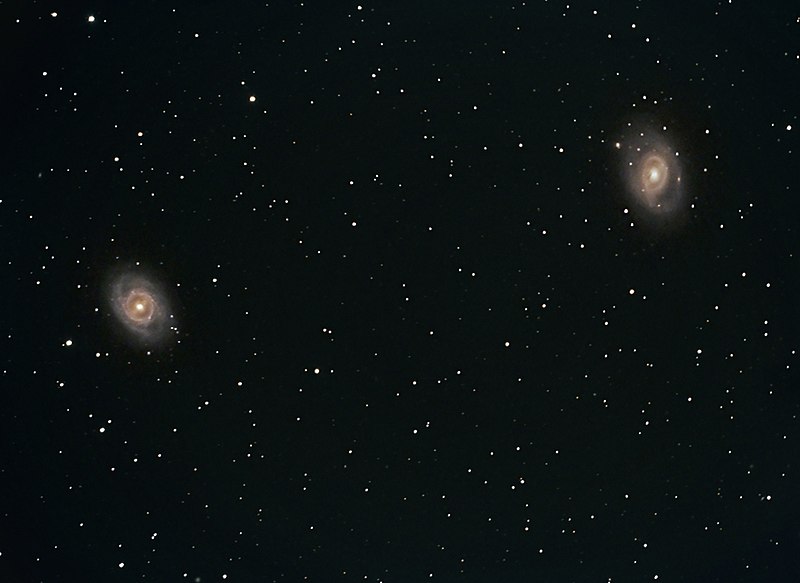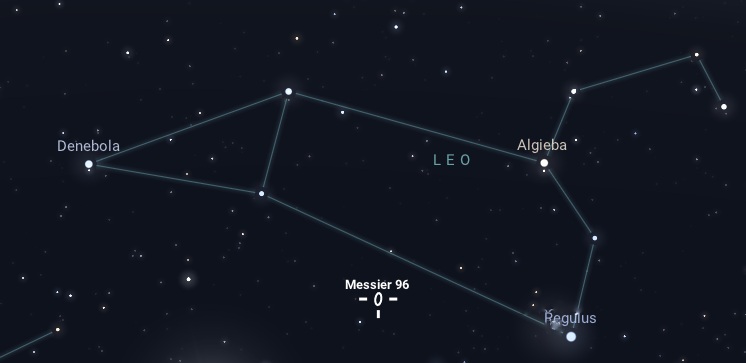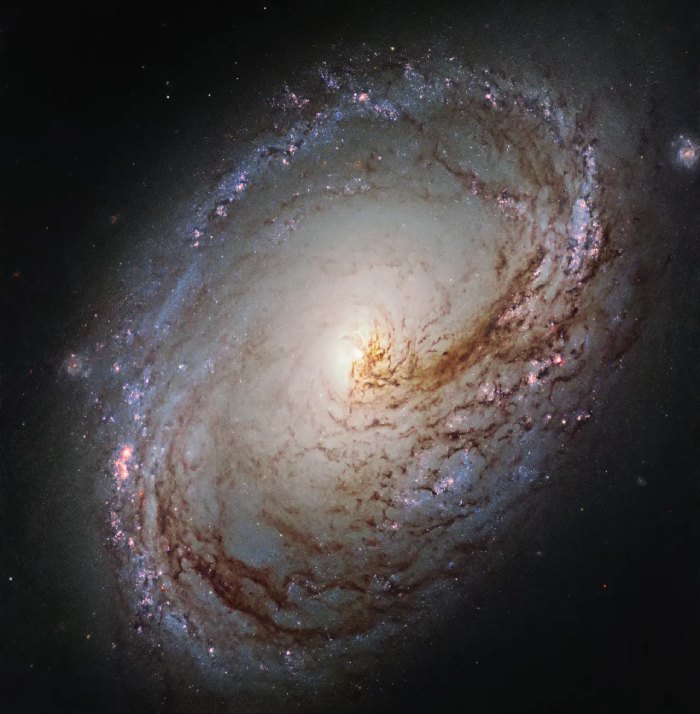M96 was discovered by the French astronomer Pierre Méchain on March 20, 1781. It was subsequently included in Charles Messier’s catalog of nebulae and star clusters as object number 96. M96 is classified as an intermediate spiral galaxy (SAB(rs)ab in the Hubble sequence), meaning it has characteristics between a barred and an unbarred spiral galaxy, with somewhat loosely wound spiral arms and a slightly elongated central region.
Physical Characteristics
M96 is located approximately 31 million light-years from Earth in the constellation Leo. It has an apparent diameter of about 60,000 light-years, making it somewhat smaller than the Milky Way. The galaxy features a prominent central bulge, a ring-like structure, and spiral arms that contain regions of active star formation. The asymmetry in its structure, with a displaced core and varying levels of brightness in the spiral arms, suggests past gravitational interactions or mergers with smaller galaxies.
Star Formation and Composition
M96 has several regions of star formation within its spiral arms. These regions are often identified by the presence of young, blue stars and emission nebulae. The galaxy also contains significant amounts of interstellar gas and dust, which are the raw materials for new stars. Infrared observations reveal that M96 has a warm dust component, indicative of ongoing star formation and recent stellar activity.
M96 in the Leo I Group
M96 is the brightest member of the Leo I Group of galaxies, which also includes M95, M105, and several other galaxies. The Leo I Group is a small cluster of galaxies that are gravitationally bound and interact with each other. These interactions can lead to tidal forces that distort the shapes of the galaxies and influence their star formation rates. The group’s overall dynamics are an area of active research in extragalactic astronomy.

Supernova Events
The galaxy has hosted several supernovae, the most notable being SN 1998bu, a Type Ia supernova discovered on May 9, 1998. This supernova was extensively studied because Type Ia supernovae serve as standard candles for measuring cosmic distances. Observations of SN 1998bu provided valuable data for understanding the expansion rate of the universe and the calibration of cosmic distance scales.
Research and Scientific Importance
M96 is an important object of study for understanding the formation and evolution of spiral galaxies. Its intermediate classification and asymmetric structure provide insights into the processes that shape galaxies over time. Observations across various wavelengths, from radio to X-ray, help astronomers study the distribution of stars, gas, and dust, as well as the influence of dark matter within the galaxy. The galaxy’s membership in the Leo I Group also makes it valuable for studying galaxy interactions and group dynamics.
Observation
For amateur astronomers, M96 is best observed during the spring months (from March to May) when Leo is prominent in the night sky, especially in April around midnight. When observed through a telescope, M96 appears as a faint, elliptical patch of light with a bright central region. A telescope with a diameter of at least 6 inches (15 cm) is recommended to view the galaxy, although larger telescopes will reveal more detail. Under dark skies and with good seeing conditions, the galaxy’s bright core and extended structure can be appreciated. Its asymmetric appearance makes it an interesting object for both amateur and professional astronomers.
To find M96, look for the distinctive shape of Leo, which resembles a crouching lion. The brightest star in Leo is Regulus, located at the lion’s heart (at the bottom of the sickle asterism). Move from Regulus to the second-brightest star in Leo, Denebola, which marks the tail of the lion (on the others side). Locate the stars, Chertan (Theta Leonis) and 53 Leonis that form part of the lion’s hindquarters, roughly between Regulus and Denebola. From Chertan, move approximately 10 degrees southeast to find 53 Leonis. M95 is situated about 1.5 degrees west of 53 Leonis.




